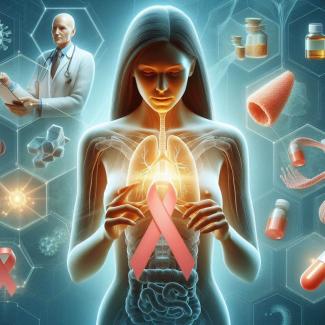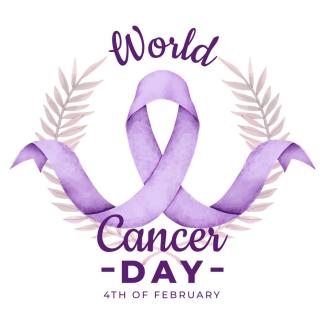
Breast cancer remains one of the most common types of cancer worldwide, affecting millions of women and, in rarer cases, men. The complexity of the disease, its varying subtypes, and the wide range of symptoms make it vital for people to be educated on its signs, symptoms, and risk factors. Early detection plays a crucial role in improving prognosis and increasing the chances of successful treatment.
In this extensive description, we will delve deep into the symptoms of breast cancer, highlight the importance of awareness and education about the disease, and explore one of its most aggressive subtypes—Triple-Negative Breast Cancer (TNBC). With an understanding of the varying presentations of breast cancer and the unique challenges posed by TNBC, we can better appreciate the importance of screening, treatment, and ongoing research.
2. Breast Cancer Symptoms
Breast cancer symptoms can vary depending on the stage of the disease, the specific subtype, and the presence of metastasis (spread of cancer to other parts of the body). Symptoms can range from subtle changes in breast appearance to more severe signs when the cancer has advanced.
Early-stage Symptoms
The early-stage symptoms of breast cancer can be subtle and are often detected through routine screenings, such as mammograms, rather than by noticeable changes. However, some women may experience signs that warrant further investigation:
- Lump or Thickening in the Breast or Underarm: One of the most common early signs is the presence of a lump in the breast or armpit area. This lump may feel firm, irregular in shape, and fixed in position, meaning it does not move when touched.
- Changes in Breast Size or Shape: Breast cancer may cause the size or shape of the breast to change. For example, one breast may appear larger than the other, or the overall shape of the breast may become distorted.
- Nipple Discharge: Unexplained discharge from the nipple, especially if it is bloody or occurs without any stimulation, can be an early sign of breast cancer.
- Skin Changes: Changes in the skin of the breast, such as dimpling, puckering, or redness, can be indicative of early-stage breast cancer. These changes may resemble the texture of an orange peel, a phenomenon known as peau d'orange.
- Nipple Changes: Breast cancer may cause the nipple to become inverted (pulled inward) or flatten. Any sudden and unexplained change in the nipple's appearance should be examined.
- Breast Pain or Tenderness: While breast pain is not typically a sign of breast cancer, it can be associated with certain types of breast cancer, particularly inflammatory breast cancer. Persistent pain or tenderness that does not fluctuate with the menstrual cycle should not be ignored.
Advanced-stage Symptoms
As breast cancer progresses, the symptoms may become more pronounced and widespread:
- Larger Lump: The initial lump may grow in size and become more easily detectable. It may also spread to the lymph nodes under the arm or near the collarbone, causing swelling or discomfort in these areas.
- Breast Swelling: The entire breast or a portion of the breast may become swollen, with the skin appearing stretched or shiny.
- Visible Veins: In some cases, the veins on the surface of the breast become more visible due to swelling and increased blood flow.
- Ulceration or Open Sores: In advanced stages, the skin over the tumor may break down, resulting in ulceration or open sores that may be painful and prone to infection.
Symptoms Related to Metastasis
Breast cancer that has metastasized (spread) to other parts of the body can cause additional symptoms depending on the location of metastasis:
- Bone Metastasis: Cancer that has spread to the bones can cause bone pain, fractures, and increased susceptibility to injuries.
- Lung Metastasis: Cancer cells in the lungs may lead to symptoms such as shortness of breath, persistent coughing, or chest pain.
- Liver Metastasis: Symptoms of liver metastasis include abdominal pain, jaundice (yellowing of the skin and eyes), and swelling in the abdomen.
- Brain Metastasis: If breast cancer spreads to the brain, symptoms may include headaches, vision changes, difficulty speaking, seizures, or weakness in certain parts of the body.
3. Breast Cancer Awareness
Importance of Awareness Campaigns
Breast cancer awareness campaigns have played a critical role in educating the public about the importance of early detection, risk factors, and treatment options. These campaigns often promote mammograms and self-examinations, encouraging individuals to be vigilant about changes in their breast health.
Breast Cancer Risk Factors
Breast cancer does not have a single cause; rather, it is influenced by a combination of genetic, hormonal, and environmental factors. Common risk factors include:
- Age: The risk of developing breast cancer increases with age, with most cases occurring in women over the age of 50.
- Family History: A family history of breast cancer, especially in close relatives like a mother, sister, or daughter, can significantly raise the risk.
- Genetic Mutations: Mutations in the BRCA1 and BRCA2 genes are strongly associated with an increased risk of breast and ovarian cancers. Women with these mutations may consider preventive measures such as increased screening or prophylactic surgery.
- Hormone Replacement Therapy (HRT): Long-term use of hormone replacement therapy (HRT), particularly combination HRT (estrogen and progesterone), has been linked to an increased risk of breast cancer.
- Reproductive History: Women who began menstruating before age 12 or went through menopause after age 55 have a higher risk due to prolonged exposure to estrogen.
- Lifestyle Factors: Obesity, excessive alcohol consumption, and a sedentary lifestyle can also contribute to an increased risk of breast cancer.
Importance of Early Detection
Early detection of breast cancer is critical to improving survival rates. When caught at an early stage, breast cancer is more likely to be treatable and curable. Key methods of early detection include:
- Mammography: Regular mammograms are recommended for women aged 40 and older. Mammograms can detect small tumors that may not yet be palpable.
- Breast Self-Exams: While self-exams are no longer universally recommended as a primary screening tool, they can still help individuals become familiar with the normal look and feel of their breasts, making it easier to detect changes.
- Clinical Breast Exams: Performed by a healthcare professional, clinical breast exams involve palpating the breast tissue and checking for lumps or abnormalities.
Common Misconceptions about Breast Cancer
- Only Women Get Breast Cancer: While it is rare, men can also develop breast cancer. Male breast cancer is often diagnosed at a later stage due to lack of awareness.
- A Lump is the Only Symptom: Breast cancer can present with a variety of symptoms beyond lumps, including skin changes, nipple discharge, and pain.
- Breast Cancer Always Runs in Families: Although a family history of breast cancer increases risk, most women diagnosed with breast cancer have no family history of the disease.
Breast Cancer Screening Methods
- Mammograms: The gold standard for early detection, mammography uses low-dose X-rays to examine the breast. It can detect abnormalities before they become symptomatic.
- Ultrasound: Often used to complement mammography, ultrasound can help differentiate between solid masses and fluid-filled cysts.
- Magnetic Resonance Imaging (MRI): MRI may be used for high-risk women or to gather more detailed images in cases where mammography and ultrasound are inconclusive.
- Biopsies: If a suspicious mass is detected, a biopsy may be performed to determine whether the lump is cancerous.
4. Triple-Negative Breast Cancer (TNBC)
What is Triple-Negative Breast Cancer?
Triple-Negative Breast Cancer (TNBC) is a subtype of breast cancer that is characterized by the absence of three key receptors known to fuel most breast cancer growth:
- Estrogen receptors (ER)
- Progesterone receptors (PR)
- Human epidermal growth factor receptor 2 (HER2)
Since TNBC does not express these receptors, treatments that target ER, PR, or HER2 (such as hormone therapy or HER2-targeted therapy) are not effective. TNBC accounts for approximately 10-15% of all breast cancers and tends to be more aggressive and challenging to treat.
Causes and Risk Factors for TNBC
The exact causes of TNBC are not fully understood, but certain factors can increase the risk:
- BRCA1 Mutation: Women with a BRCA1 mutation are more likely to develop TNBC than other forms of breast cancer.
- Age and Ethnicity: TNBC is more commonly diagnosed in younger women, particularly those under the age of 40. It is also more prevalent in African American and Hispanic women.
- Body Weight: Obesity has been linked to an increased risk of TNBC, particularly in postmenopausal women.
Symptoms of TNBC
The symptoms of TNBC are similar to those of other breast cancer types, including:
- A new lump in the breast or armpit
- Swelling or thickening of part of the breast
- Nipple inversion or discharge
- Skin changes such as redness, dimpling, or scaling
Due to the aggressive nature of TNBC, symptoms can progress more rapidly than in other forms of breast cancer.
Diagnosis and Testing
TNBC is diagnosed through a combination of:
- Mammograms and Ultrasounds: These imaging techniques help detect masses or abnormalities in the breast tissue.
- Biopsy: A biopsy is performed to analyze the tumor cells and confirm the absence of ER, PR, and HER2 receptors.
- Genetic Testing: Genetic testing may be recommended, particularly if there is a family history of breast or ovarian cancer, or if the patient is diagnosed at a young age.
Treatment Options for TNBC
Due to the lack of receptor targets, TNBC treatment options are limited compared to other breast cancer types. However, the following treatments are commonly used:
- Chemotherapy: Chemotherapy remains the cornerstone of treatment for TNBC, often given before (neoadjuvant) or after (adjuvant) surgery. TNBC is typically more responsive to chemotherapy than hormone-positive cancers.
- Surgery: Surgical options include lumpectomy (removal of the tumor) or mastectomy (removal of the entire breast), depending on the size and spread of the tumor.
- Radiation Therapy: Radiation therapy may be used after surgery to destroy any remaining cancer cells and reduce the risk of recurrence.
Challenges in Treating TNBC
One of the biggest challenges in treating TNBC is its high recurrence rate, particularly within the first few years after treatment. Additionally, TNBC tends to metastasize more rapidly than other breast cancers, with common sites of metastasis including the lungs, liver, and brain.
Current Research and Clinical Trials
Research into TNBC is ongoing, with clinical trials exploring new treatment strategies, such as:
- Immunotherapy: Immunotherapy, which harnesses the body's immune system to fight cancer, has shown promise in treating TNBC. Drugs like pembrolizumab (Keytruda) and atezolizumab (Tecentriq) have been studied in clinical trials with encouraging results.
- PARP Inhibitors: For patients with BRCA mutations, PARP inhibitors like olaparib (Lynparza) and talazoparib (Talzenna) may be effective in preventing cancer cells from repairing their DNA, leading to cell death.
Future Prospects in TNBC Treatment
The future of TNBC treatment lies in personalized medicine, where treatments are tailored to the unique genetic and molecular characteristics of each patient's tumor. Researchers are also exploring targeted therapies that may be able to effectively treat TNBC by focusing on pathways that drive tumor growth.
5. Psychological and Emotional Impacts
Breast cancer, particularly aggressive forms like TNBC, can have a profound psychological and emotional impact on patients and their families. The uncertainty of the disease, fear of recurrence, and physical side effects of treatment can lead to feelings of anxiety, depression, and isolation. It is crucial for healthcare providers to offer comprehensive support, including counseling and support groups, to help patients navigate these challenges.
Breast cancer, with its varying symptoms and subtypes, continues to be a significant health concern worldwide. Understanding the early signs of breast cancer, raising awareness about risk factors, and promoting regular screenings can save lives through early detection. Triple-Negative Breast Cancer, although more aggressive and difficult to treat, is the subject of promising research that may soon lead to more effective therapies.
Empowering individuals with knowledge about breast cancer symptoms, raising awareness, and supporting continued research efforts are crucial steps in the fight against this disease.






